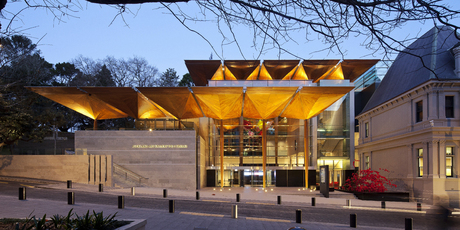 Medrar for Contemporary Art, an artistic organisation for arts and
media, relocated to a larger space in Cairo's Garden City district last
week. Mohamed Allam, a founder of Medrar, talked to Ahram Online about
the organisation and its various projects.
Medrar for Contemporary Art, an artistic organisation for arts and
media, relocated to a larger space in Cairo's Garden City district last
week. Mohamed Allam, a founder of Medrar, talked to Ahram Online about
the organisation and its various projects.
Medrar, which means 'abundant' in classical Arabic, was founded in 2005 by two independent artists, Mohamed Alaa and Mohamed Abdel Karim, the latter of whom is no longer a member.
Its first project was a 2005 video festival, which was held at the Cairo International Conference Centre. "The video festival included short experimental films and video art pieces from different countries," Allam told Ahram Online.
However, due to a lack of space, Medrar's projects were always held at venues such as the conference centre, the Townhouse art gallery or the Goethe Institute.
"It used to take a lot of time, going around to different cultural centres to find venues for our events," said Allam. "Having this new, bigger space has made it much easier."
The spacious, high-ceiling apartment in Garden City has three rooms for exhibitions, lectures and workshops. The space was obtained through the Mawred Al-Thaqafy's Abbara Programme.
"We have three main projects, along with other temporary ones," said Allam.
Along with the video festival, the organisation's main projects include 'Open Lab' and 'Medrar TV,' a YouTube channel devoted to the contemporary art scene.
"We want to document all contemporary artistic events because there are many performances and exhibitions, which, when they end, are lost forever," Allam said. "The channel will also be a link between artists and audience. Different artists speak about their art so as not to alienate the audience from what they do."
The 'Open Lab' project, meanwhile, aims to develop the digital arts in Egypt through Open Source tools, thus creating a local community of artists, designers, educators and engineers that can help develop electronic interfaces.
Other temporary projects include 'Witness Bearing,' a workshop in which artists tell their own stories within their society through contemporary means. The project represents a collaboration with the Bronx Museum in New York.
"We're also considering doing more projects in collaboration with Arab artists," said Allam, who has been to Tunisia several times this year alone. "All contemporary art centres in Egypt obtain funds from Europe and deal with European organisations. We want to have more of a connection to the Arab world."
Allam said the Tunisian music and theatre scenes were marked by variety and experimentation.
"There is a wide audience there," he said. "Concerts are usually attended by around 1000 people; they have many events and festivals throughout the year. And it is not only the artists who attend these events, but rather anyone on the street."
"What we are most aware of is that artists don't need organisations anymore, while money isn't a problem since artists obtain many funds," he added. "Even art education is easily obtained through the Internet."
"The Internet isn't an alternative space anymore," Allam concluded. "It's become a parallel world and we're adapting to that."
1







